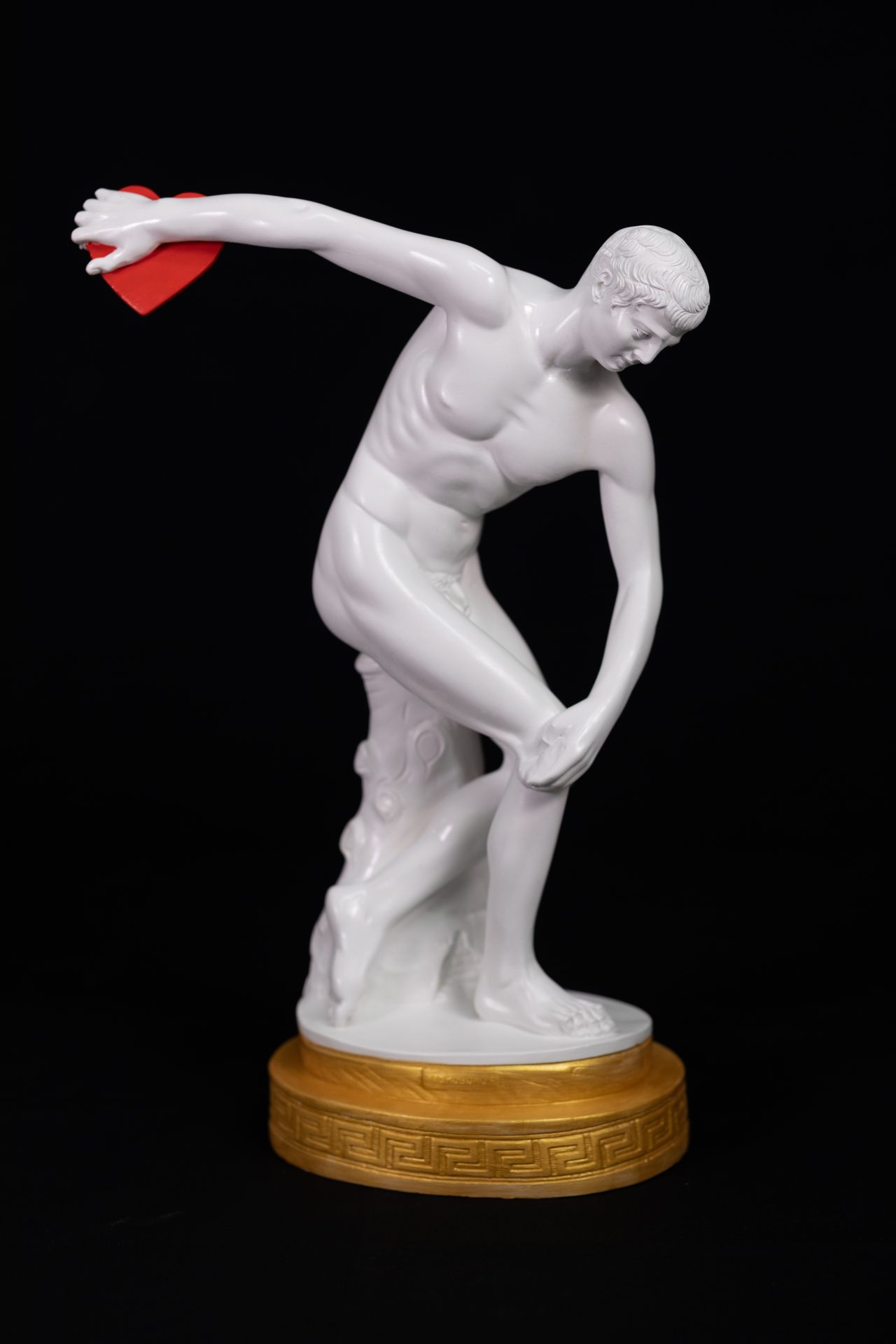Greek sculptures required superhuman effort. Their development was to produce more than mere artefacts.
These creative displays combined range of hidden insights, knowledge from mathematics, physics, philosophy, and arts. They were a ‘knowledge-bank’ securely guarded by the person who conceived and developed them.
People needed to look closely before gathering significant information about its greater symbolism. As if there was a hidden message, the audiences needed to deploy appropriate interpretive tools to decode them.
Sculptures emerged throughout the Greek classical period and took in their path many significant qualities about the story of the peoples’ own development.
They were highly treasured for revealing truths about the ‘present’ as well as the ‘future’. Their power was and it is still found in capturing an impressions for an ‘image’ that could withstand the span of aeons.
The Discobolus of Myron
The original Greek bronze of the Discobolus dates from about 460–450 BC and is lost, but the work is known through numerous Roman copies in marble, a cheaper material than bronze. The Greek sculptor, known as Myron, is credited with creating sculptures with bolder poses and finer tuned rhythms. He was also praised for his attention to anatomical detail.

As the citizens of the Greek πόλεις (cities) were going through their daily activities these artefacts were standing high and tall.
They were becoming daily subject of deep conversations. They were triggering significant debates about the ‘meaning of life’, the purpose of ‘human existence’, the sum of the human ‘desires’, the desire to ‘accomplish life’s own goals’.
At present, most of these statuses are situated within museums for public display.
Copies are easily obtainable to private consumers. Their design is reproduced by using marble-like material. In our own exploration of the significance of these treasures we ask a question about ‘relevance’ and ‘association’. What information can be extracted from the monumental works that can be of relevance to our today’s busy lives? It is the effort to find an answer to find the answer to the difficult questions that take us back to Classical Greece.
The Heart Thrower
In remastering these sculptures by using marble plaster we undergo a similar experience of imagination and creativity-projection.
Our imagination is taking us to new places where the desire to capture the human accomplishments is meeting the necessity of satisfying immaterial and even spiritual needs. We are intrigued by the question how these unique artefacts can speak to us today?

Our project is to allow the naturally embedded messages to come out by making more visible those qualities that are closely associated with their original identity.
For example, the discobolus is capturing the image of an athlete at the time where every part of his body posture is designed to throw the ‘discus’ as far as he can.
There is a unique balance in the symmetry of the movements, his concentration but also how his upcoming tension for ‘throwing’ is also met with some prior ‘relaxation’ of his body that allows him to accomplish his goal in the best possible way.
Whereas the preparation of getting ready one’s body and mind required considerable commitment for throwing the discus, it was the dedication of one’s prior exercise that stood out before viewers.
We are inspired by the Discobolus’s love and commitment towards the act of ‘throwing’ the discus. Hence, we seek to capturing the deeper associations with the wider symbolism of love, kindness, and all those qualities that are of significance to human existence.
The circular movement requires concentration as well as the dedication to use the other parts of the body for the service of meeting this single goal!
We find significant parallels between the movement of the Discobolus as discus thrower to the role and capacity that all people can play in sharing that which is equally needed within our society, namely, ‘sincerity’, ‘courage’, ‘aspiration’, ‘understanding’, ‘love’.
However, as the posture suggests the prerequisites of embracing the challenge denotes an order of willingness, preparation, and commitment towards the act of ‘throwing’.
Like any physical form of exercise where tiredness and sweat are inevitable…. love is an exercise. It requires effort and commitment. It cannot be taken for granted. It starts with considerable attention and some long-term engagement for what is to be accomplished.
